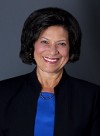Consuming too many potato latkes and Christmas cookies has left its mark on our waistlines. Unfortunately for Americans and their medical care, the seasonal overeating seems to last all year. Indeed, the American Medical Association has declared that obesity is a disease.
It may be more accurate to describe obesity as a contributor to certain diseases. Obesity raises the risk of premature death, heart disease, high blood pressure, stroke, type 2 diabetes, gallbladder disease, breathing problems, certain cancers, and osteoarthritis. Certainly, obesity can result from certain uncommon diseases and hereditary factors, but most people become obese simply because they eat too many unhealthy foods and do not exercise.
At its last count, the Centers for Disease Control and Prevention (CDC) estimated that 40 percent of U.S. adults age 20 and over, 21 percent of teens, and 14 percent of preschoolers are obese. A December 2019 study that analyzed 26 years of body mass index (BMI [the relation of weight to height]) data concluded that half of U.S. adults will be obese (BMI>25) by 2030. Some 25 percent will be severely obese (BMI>35). Moreover, less than 5 percent of adults get the recommended 30 minutes a day of physical activity. And even when people living in “food deserts” were presented with healthy options, only 10 percent changed their evil eating ways.
According to the CDC’s last comprehensive analysis, the annual medical cost of obesity in the United States to Medicare, Medicaid, and private insurers was $147 billion in 2008. And the medical costs for obese people were $1,429 higher than those of healthier weights.
The saddest development is the cultural normalization of obesity with lingerie models, singers, and television shows celebrating fatness. Do we high-five people with other lifestyle related conditions such as alcoholism, emphysema, or coronary artery disease? Of course not.
The obese are easy targets for drug company peddlers of quick fixes or “providers” who want to extract money from third-party payors. U.S. pharmaceutical companies spent $6.1 billion on direct-to-consumer prescription drug advertising in 2017. Many ads feature chunky type 2 diabetics happily frolicking about, thanks to the drug company’s magic pill. The ads might as well say, “pass the chocolate cupcakes with statin sprinkles drizzled with insulin.” We all know the prescription of eating less and exercising more is free of charge.
Alas, we are losing the battle of the bulge. A recent study found that participants failed to lose weight despite reporting that they were exercising and watching their diet. The authors concluded that “many of [the participants] might not have actually implemented weight loss strategies or applied a minimal level of effort, which yielded unsatisfactory results.”
While politicians debate the merits of spending trillions of dollars on government-sponsored medical care, a correctable source of high medical costs is hiding in plain sight. Irrespective of who pays for medical care, rational economic decisions must be made. The Affordable Care Act (ACA) waved a magic wand and removed preexisting conditions from the underwriting equation when calculating premiums. A sick person and a healthy person of the same age could purchase insurance at the same price. Consequently, the ACA doubled the costs for people who made the effort to take care of themselves.
The ACA did allow a “tobacco surcharge” of up to 50 percent more for premiums. Why not an obesity surcharge? This would provide an incentive for consumers to take obesity seriously. Additionally, health-conscious persons would not have to pay for the bad habits of others through taxes to fund government health insurance programs or through higher private insurance premiums.
Those who are stricken with illnesses through no fault of their own need a path to affordable medical care. A good start for lowering costs would be eliminating costly middlemen by encouraging consumers to pay directly for day-to-day medical expenses. Expanding contribution limits and eligible uses of Health Savings Accounts would help pay for the more reasonably priced direct-pay surgery and other alternatives to insurance like direct primary care.
With regard to insurance, we need a revival of competition in the insurance market with multiple products and carriers. Once again, single men could opt to decline pregnancy coverage. We need to restore the pre-ACA availability of low-cost catastrophic (major medical) insurance policies to all ages. Even before mandated by the Health Insurance Portability and Accountability Act of 1996 (HIPAA), the large majority of insurers offered guaranteed renewable policies. Here, assuming timely payment of premiums, at the end of the policy period the insurer must renew coverage regardless of the health of the insured. Naturally, this valuable feature costs more but provides consumers with a strong incentive not let the insurance lapse.
Let’s confront the elephant in the room. Healthcare policy should promote personal responsibility, rather than encourage free riders. In America we are free to overeat and under-exercise but we have no right to make innocent bystanders pay for the consequences.






